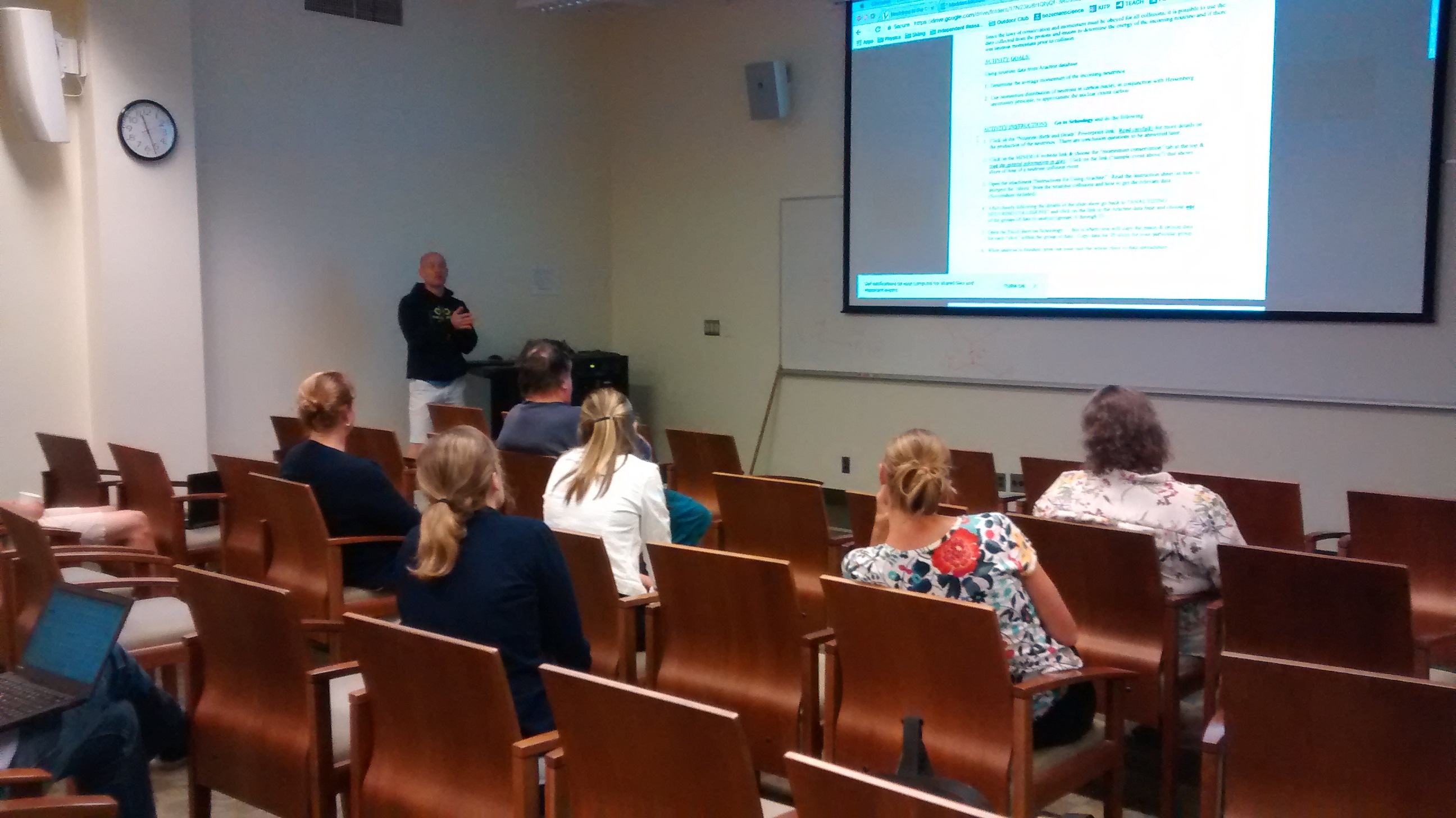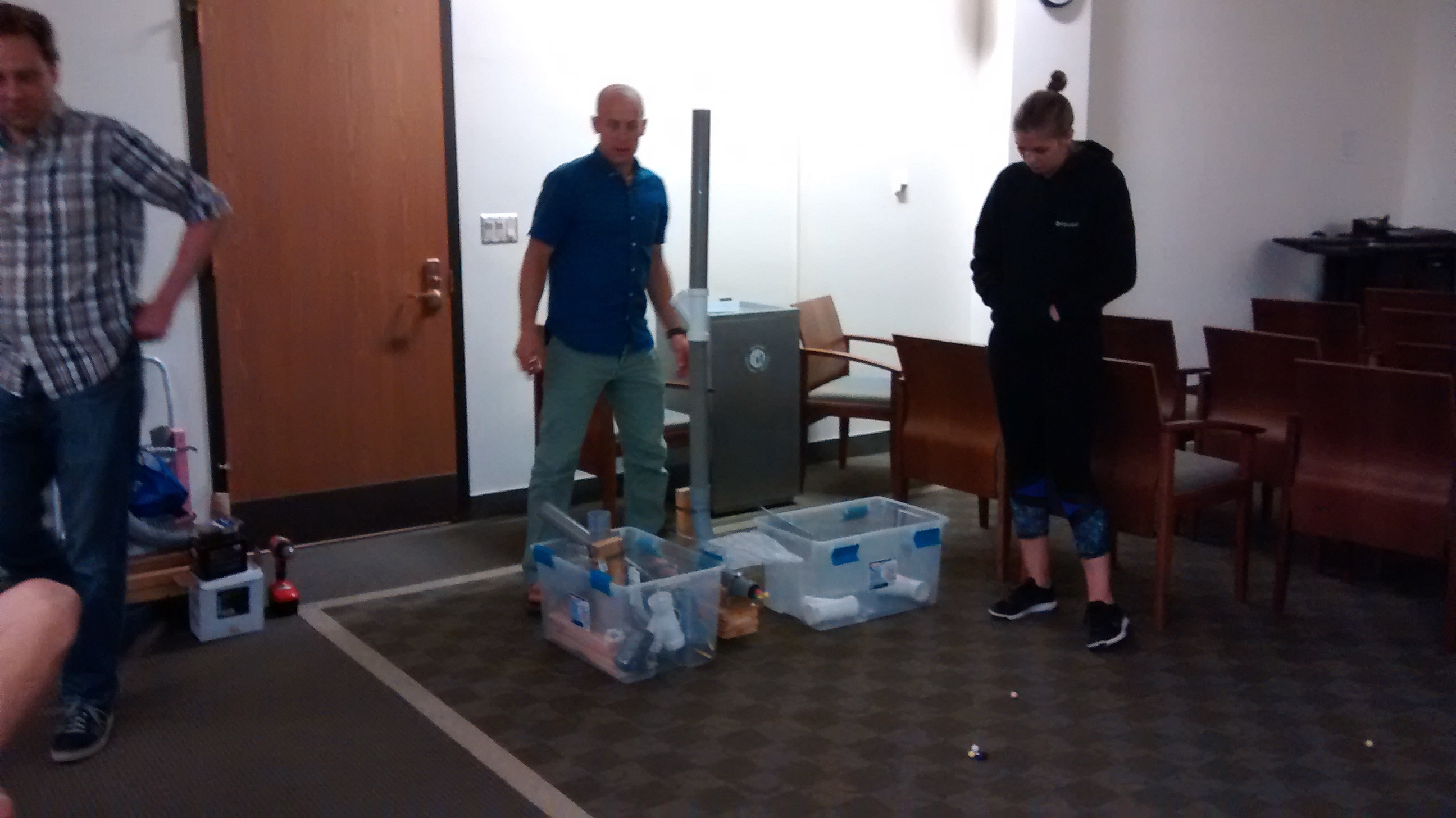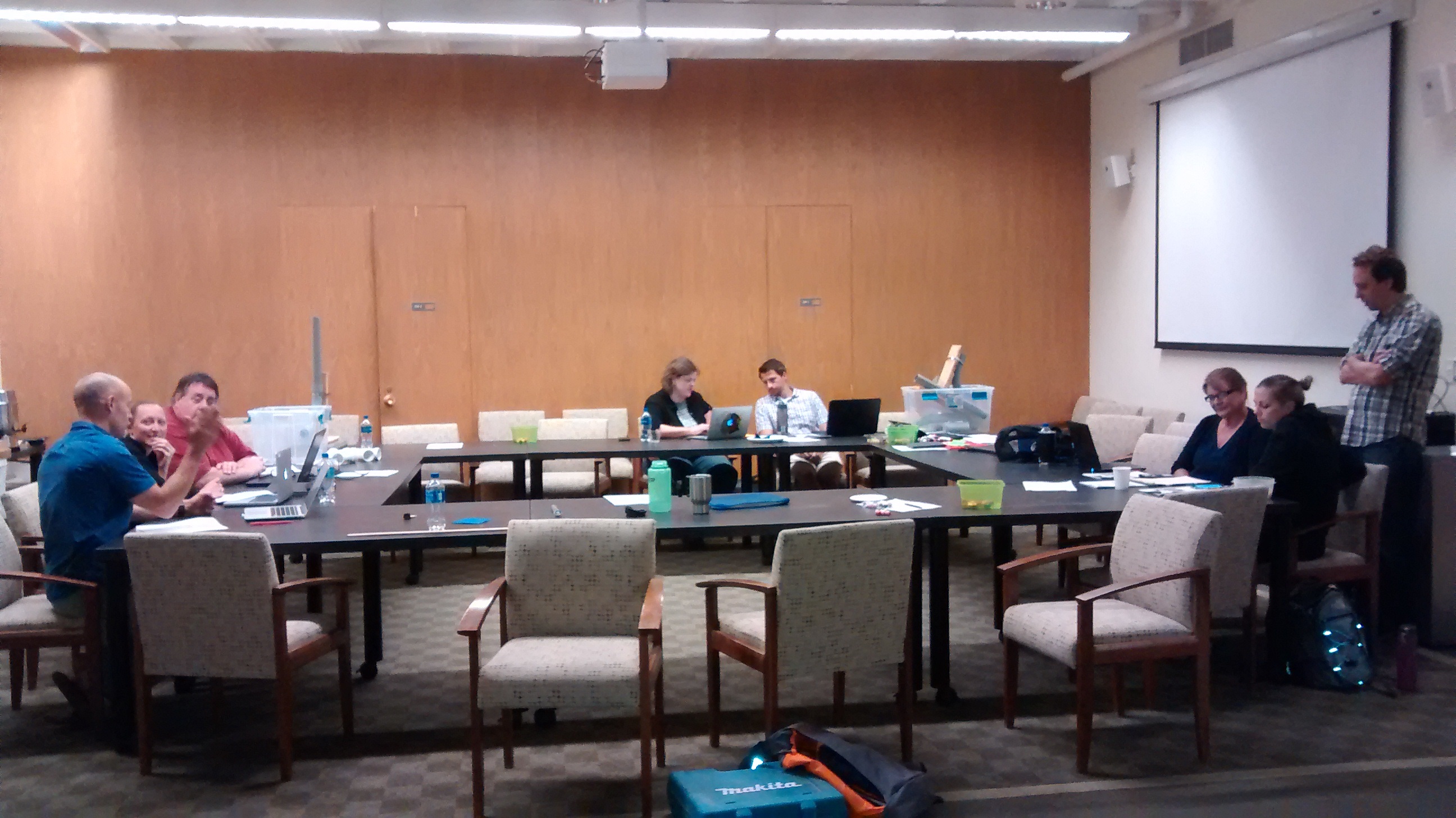Summer 2018 Quarknet Workshop at Syracuse University
The Syracuse group hosted a 3-day Quarknet workshop from Aug 8 – 10, 2018 in the physics department at Syracuse University. Profs. Steven Blusk and Matt Rudolph hosted the event. This year, we had 8 teachers attend from the following school districts:
- Anne Huntress: South Lewis High School
- Michael Madden: Canandaigua Academy High School
- Alexa Estock: Fayetteville-Manlius High School
- Stephanie MetzMiller: Webster-Schroeder High School
- Richard Heffernan: Phoenix Central High School
- Steve Dunckel: Oneida High School
- Patricia Madigan: Cicero-North Syracuse High School
- Lindsey Shaw: Cazenovia High School.
The focus of the first day was centered on neutrinos. In the morning, Prof. Blusk delivered a
two-part presentation on the physics of neutrinos, describing why they are interesting, and how one detects neutrinos. This presentation was followed up by a hands-on activity in the afternoon, using the neutrino classroom activity at http://neutrino-classroom.org/. One of our teachers, Michael Madden, kindly agreed to give an overview of the activity to the other teachers (see Fig. 1). The activity was focused on applying momentum conservation to high energy neutrino collisions n the Minerva experiment.

On day 2, we spent the morning assembling a set of demonstrations that simulate particle collisions between nuclei. The nuclei are formed by a set of spherical magnets, and hover just at the bottom opening of the PVC pipe shown in Fig. 2. Another nucleus, formed by one or more of the magnetic marbles is accelerated down the pipe, and collides with the nucleus at the bottom. Variations of the experiments were discussed, such as different nuclei sizes, different collision energies (via different initial heights from which the nuclei are dropped into the vertical pipe), and so on. We also discussed how one might integrate this activity with an exercise in histogramming. For example, students could make histograms of the displacement of each of the fragments, and then come up with a scientific explanation of the distribution that they observe.

In the afternoon, we switched gears to a new activity. We divided the teachers up into small groups of
2-3, and asked them to come up with an idea, an activity or some kind of experiment that integrates modern physics concepts into the rest of their physics curriculum. A 12-page document was prepared and provided in advance that gave some ideas, such as PET scans, proton/neutron/heavy ion therapy, wave particle duality, GPS, etc. The teachers spent about 3 hours on day 2, and another 3 hours on the morning of day 3 working in the small groups (see Fig. 3). Just before lunch on the third day, each group presented their ideas, and shared the worksheets that they developed with the rest of the group. The teachers indicated that they could envision integrating some or all of these activities in their classrooms.

After lunch on the third day, in anticipation of the lab tours, Prof. Rudolph gave a 30-min presentation on the physics and operation of silicon microstrip detectors. Following the talk, we arranged for 3 lab tours. The first tour was of the Biophysics laboratory, where teachers learned how researchers study how proteins interact with one another as they pass through small pores (Movileanu laboratory). We then met with colleagues in the Astrophysics laboratory, where graduate students discussed how we study formation of molecules on the interstellar dust in the cosmos. The day was finished up by a tour of the high energy physics laboratory, where we discussed the goals of the LHCb experiment, and showed them some of the development work on a new detector for the LHCb upgrade (Upstream tracker).
The workshop concluded after the high energy physics lab tour.
